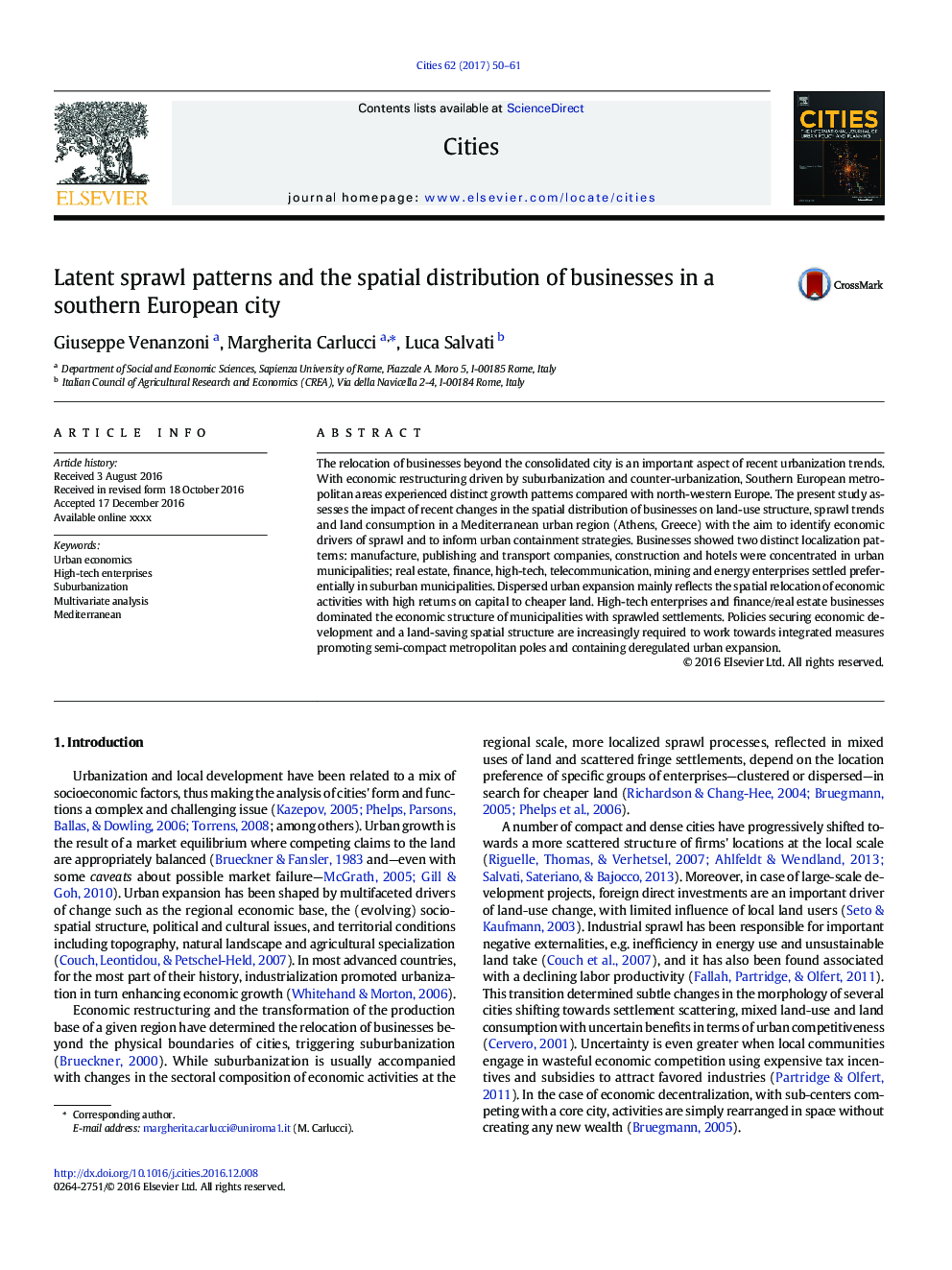| Article ID | Journal | Published Year | Pages | File Type |
|---|---|---|---|---|
| 5108043 | Cities | 2017 | 12 Pages |
Abstract
The relocation of businesses beyond the consolidated city is an important aspect of recent urbanization trends. With economic restructuring driven by suburbanization and counter-urbanization, Southern European metropolitan areas experienced distinct growth patterns compared with north-western Europe. The present study assesses the impact of recent changes in the spatial distribution of businesses on land-use structure, sprawl trends and land consumption in a Mediterranean urban region (Athens, Greece) with the aim to identify economic drivers of sprawl and to inform urban containment strategies. Businesses showed two distinct localization patterns: manufacture, publishing and transport companies, construction and hotels were concentrated in urban municipalities; real estate, finance, high-tech, telecommunication, mining and energy enterprises settled preferentially in suburban municipalities. Dispersed urban expansion mainly reflects the spatial relocation of economic activities with high returns on capital to cheaper land. High-tech enterprises and finance/real estate businesses dominated the economic structure of municipalities with sprawled settlements. Policies securing economic development and a land-saving spatial structure are increasingly required to work towards integrated measures promoting semi-compact metropolitan poles and containing deregulated urban expansion.
Related Topics
Social Sciences and Humanities
Business, Management and Accounting
Tourism, Leisure and Hospitality Management
Authors
Giuseppe Venanzoni, Margherita Carlucci, Luca Salvati,
